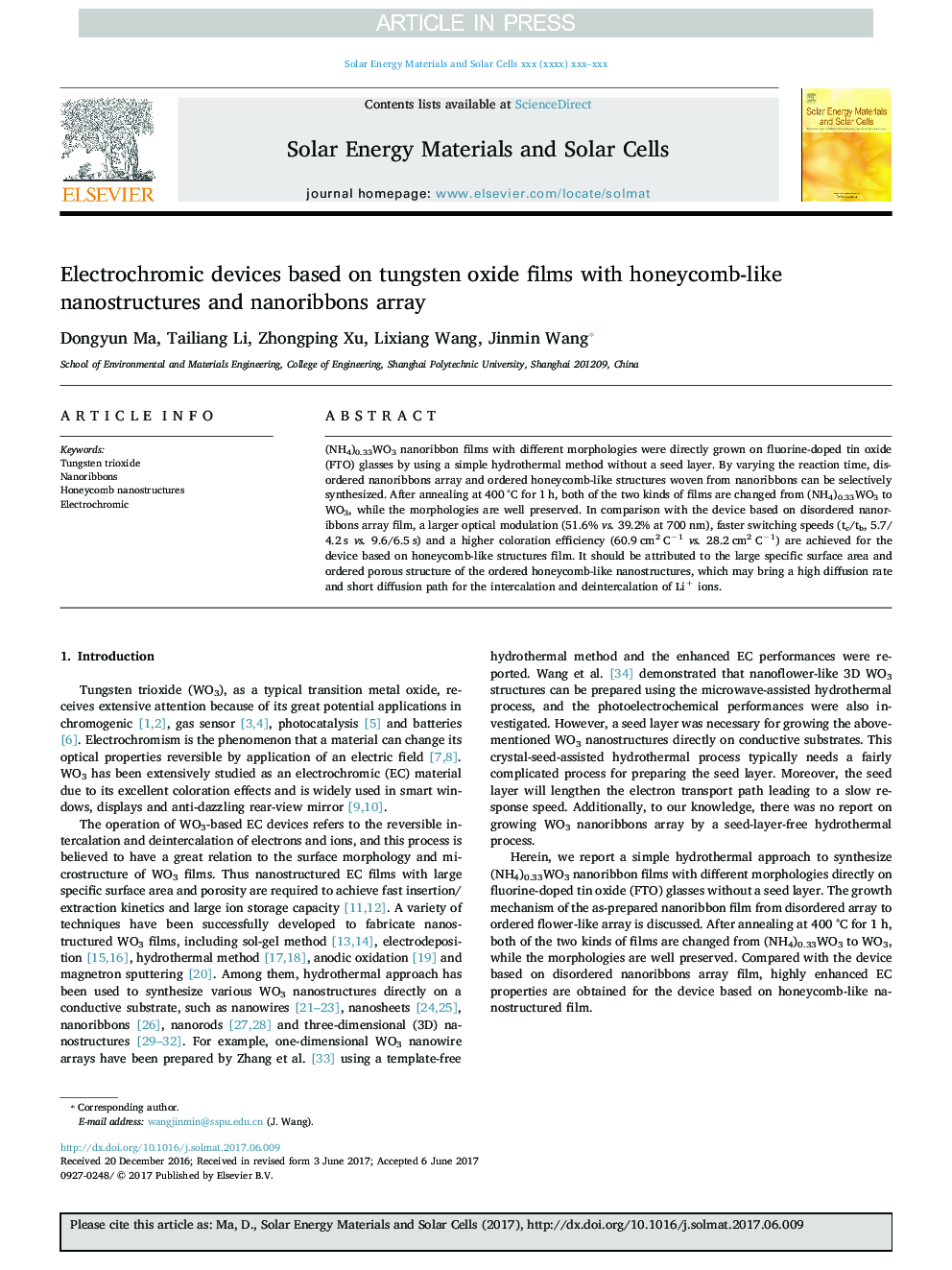| Article ID | Journal | Published Year | Pages | File Type |
|---|---|---|---|---|
| 6534393 | Solar Energy Materials and Solar Cells | 2018 | 6 Pages |
Abstract
(NH4)0.33WO3 nanoribbon films with different morphologies were directly grown on fluorine-doped tin oxide (FTO) glasses by using a simple hydrothermal method without a seed layer. By varying the reaction time, disordered nanoribbons array and ordered honeycomb-like structures woven from nanoribbons can be selectively synthesized. After annealing at 400 °C for 1 h, both of the two kinds of films are changed from (NH4)0.33WO3 to WO3, while the morphologies are well preserved. In comparison with the device based on disordered nanoribbons array film, a larger optical modulation (51.6% vs. 39.2% at 700 nm), faster switching speeds (tc/tb, 5.7/4.2 s vs. 9.6/6.5 s) and a higher coloration efficiency (60.9 cm2 Câ1vs. 28.2 cm2 Câ1) are achieved for the device based on honeycomb-like structures film. It should be attributed to the large specific surface area and ordered porous structure of the ordered honeycomb-like nanostructures, which may bring a high diffusion rate and short diffusion path for the intercalation and deintercalation of Li+ ions.
Related Topics
Physical Sciences and Engineering
Chemical Engineering
Catalysis
Authors
Dongyun Ma, Tailiang Li, Zhongping Xu, Lixiang Wang, Jinmin Wang,
